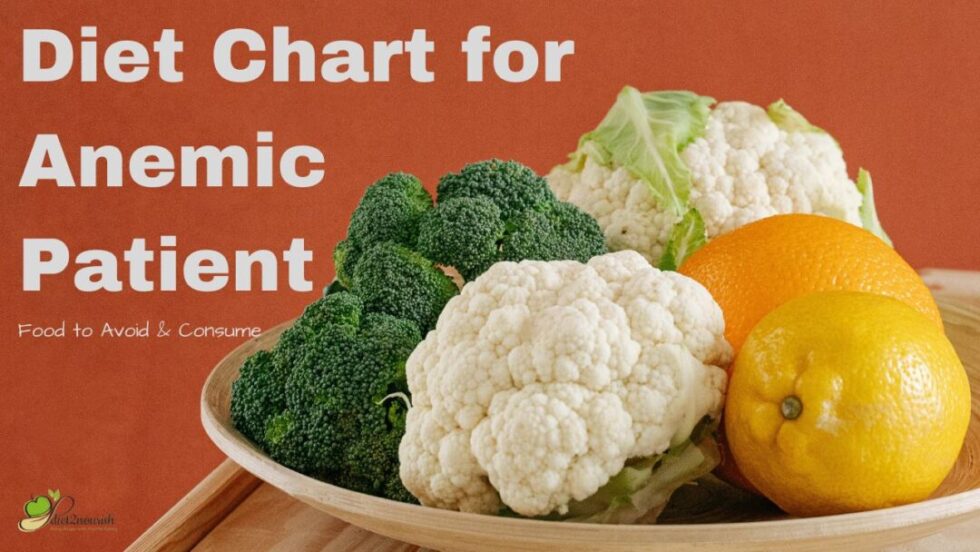Anemia is a condition in which the body lacks enough red blood cells to carry oxygen to its tissues. It can cause fatigue, weakness, and shortness of breath, among other symptoms. A healthy and balanced diet can help improve anemia by providing the body with the necessary nutrients to produce more red blood cells. Here is a diet chart for anemic patient that includes foods rich in iron, vitamin B12, and folic acid.
- Iron-Rich Foods: Iron is a mineral that is essential for the production of red blood cells. Iron-rich foods include:
- Red meat, poultry, and fish
- Beans and lentils
- Tofu
- Spinach and other leafy greens
- Fortified breakfast cereals
- Quinoa
- Nuts and seeds, such as pumpkin seeds and cashews
- Dried fruits, such as apricots and raisins
- Vitamin B12-Rich Foods: Vitamin B12 is important for the production of healthy red blood cells. Foods that are high in vitamin B12 include:
- Animal products, such as meat, poultry, fish, and dairy products
- Fortified breakfast cereals
- Nutritional yeast (for vegans)
- Folic Acid-Rich Foods: Folic acid, or folate, is essential for the production of red blood cells and helps prevent anemia. Foods that are high in folic acid include:
- Dark leafy greens, such as spinach and kale
- Asparagus
- Broccoli
- Beans and lentils
- Citrus fruits, such as oranges and grapefruits
- Fortified breakfast cereals
A sample diet chart for anemic patients could look like this:
Breakfast:
- Fortified breakfast cereal with milk and a sliced banana
- Whole-grain toast with avocado and tomato
- Spinach and cheese omelet
Snack:
- Handful of pumpkin seeds
- Apple slices with almond butter
- Hard-boiled egg
Lunch:
- Grilled chicken or fish with a spinach salad and quinoa
- Lentil soup with whole-grain bread
- Tofu stir-fry with brown rice and vegetables
Snack:
- Dried apricots and cashews
- Carrot sticks and hummus
- Greek yogurt with mixed berries
Dinner:
- Beef or tofu stir-fry with broccoli and brown rice
- Spinach and feta stuffed chicken breast with roasted sweet potatoes
- Salmon with quinoa and roasted Brussels sprouts
It’s also important to note that some foods can interfere with the absorption of iron, such as tea, coffee, and calcium-rich foods. Anemic patients should try to avoid consuming these foods with meals high in iron. Vitamin C-rich foods, on the other hand, can enhance iron absorption, so adding a squeeze of lemon or some bell peppers to a meal can be helpful.
In conclusion, a healthy and balanced diet that includes iron-rich foods, vitamin B12-rich foods, and folic acid-rich foods can help improve anemia and boost the production of red blood cells. A dietician can help tailor a diet plan that meets an individual’s specific nutritional needs and ensure that they are getting all the necessary nutrients to improve their anemia.
